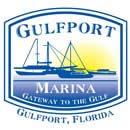Sailing Injuries by Anthony Pozun
Sailing Injuries
By Anthony Pozun, BS, RN.
Anthony Pozun is a New York State registered professional nurse and former Detective Sgt., EMT, first aid basic and
advanced courses’ instructor at the Nassau County police Academy. He is a current member and certified instructor for the United States power squadrons for sail and basic boating courses of instruction. He has been an avid boater and sailor for 50 years. He has sailed intensively on Long Island sound with his wife Barbara for the past 30 years. He has traveled and sailed the East Coast including the Intracoastal Waterway from Northport to Florida and the Bahamas and back again. He currently sails a Catalina C 400 Mystical Paradise, sailboat set up for long-term cruising. He has written a previous article entitled “Medical Emergencies at Sea”, which has been published in many local and national boating periodicals.
Sailing as a pastime, hobby or a full-time leisure activity, can be both fulfilling and enjoyable. A sailboat has many working parts necessary to convert wind into propulsion to use the sailboat. These many working parts need to be respected, and pre-lanning is essential in their usage. The many working parts and movement of these parts and the sailboat itself, can cause accidents, falls, collisions, which may lead to injury sometimes severe. But with a little bit of planning and forethought, before its usages, the sailboat and its many working parts, can be enjoyed without injury.
This article will discuss the possible incidents and accidents, leading to injuries, and will give some suggestions for pre-planning, prevention, commonsense rules, on dealing with the many working parts of a sailboat to prevent injuries. Additionally at the end a basic primer on basic first aid including some of these of injuries will be discussed. These incidents include falling overboard, falling down hatches, falling, tripping on working lines and devices around the deck or cockpit. Hand and finger injuries as well as swinging boom injuries will be discussed. Running aground or hitting fixed objects will also be covered. Cooking aboard injuries, maintenance injuries, and seasickness although not a true injury, will be discussed. One overriding principle to be used to prevent accidents occurring, is to pre-plan in one owns mind what needs to be accomplished, how to do it, what can go wrong, how injury can be prevented.
Little information from studies — are available on the amounts of overboard incidents occurring. We’ve all heard of some catastrophic details including deaths, from crew members falling overboard on large ocean type sailboat races such as the Fastnet disaster, or Volvo Ocean races. But persons can be swept overboard in the bay or sound just as easily. Being swept overboard is one of the most fatal type injury that can occur on a sailboat. But most overboard incidents can be avoided with the application of certain precepts. These include using a little common sense, some pre-planning caution and a thorough examination and assessment of one’s environment and surroundings. Put together this is all called prevention. The main thought of any person should be “ stay on the boat”,” stay on the boat”,” stay on the boat”. Asking oneself do I need to work on deck, what pitfalls are present, i.e. low or no lifelines, low free board, open transom, etc., that could lead to going overboard. All crew members working on the sailboat should at least wear a PFD, personal flotation device. A member alone on deck, at the helm, or a lone sailor, should always wear a PFD, with a safety harness and tether attached to the boat, because no one will see him or her being swept overboard. Mentally crew members or guests should obey the adage when moving about; “one hand for me, one hand for the boat”. They should move about low to the deck, slowly and purposely always keeping one hand attached to the boat. Because we cannot always prevent persons going overboard, certain safety equipment should be available on the sailboat. This may include main overboard poles, life rings, throw rings, float-able, cushions. A hoist, PFD’s with GPS locators, all items to assist retrieval of persons thrown overboard.
Captains and their crew should practice man overboard drills to see how it’s done, to deal with any issues that arise, so in a real incident they know what to do. In these incidents, it is imperative that someone be given the job of observer. His focus is to keep an eye on the person in the water. To facilitate retrieval of the person, crew should slow the boat down by dropping sails, and then perform a Williamson turn, that is a series of s “s that turns the boat around, that allows boat to go back to retrieve person. Retrieval of the person can be accomplished with the use of ladders, davits, hoists, the boom, and crew members in the water as a last resort.
Another serious incident is falling through open hatches and walkways. This can result in injuries ranging from
contusions to serious fractures. Again a little prevention through pre-planning will help. The adage “one hand for me one hand the boat “must be observed. When moving about a moving or stationary boat one must move cautiously, slowly, and with purpose. Rushing about only causes injuries. Crew members or guests before sailing should study the locations of hatches, companion ways, and other openings which could cause a fall. Think before you move, move slowly, should be your mental condition. Owners of boats may mark those areas of danger with protective foam, and or highlight with bright colors or decals to warn others.
A third incident that may occur is tripping and falling on deck and cockpit lines and many devices used in the course of sailing. These injuries include bruises, contusions and fractures to toes, feet, lower limbs and upper limbs from tripping and falling. Pre-planning and Prevention is the key to prevent these injuries. First, study your environment, know what can trap or trip you i.e. lines, cleats, blocks, winches, and many other devices which may bite. Always move slowly purposely keeping one hand for you one hand for the boat as your mantra. Always wear sturdy shoes, boat shoes or sneakers. Never move about the boat with sandals, Flip-flops, other loose footwear or barefoot. Think before you move, ask yourself is this necessary, and what can happen to me.
A fourth type of incident which can lead to serious consequences is swinging boom accidents. The boom on a sailboat is constantly moving, is heavy and has a tremendous amount of force behind it. Injuries are many and include concussions to the head, injuries to the body and even being swept overboard. Crew members and passengers should always assess the possibility of being struck by the boom. Some prevention includes, not moving about, not standing up completely, and watching for accidental jibes or tacks which may cause accidental movement of the boom. Crew and guests should always listen to commands of the captain, during tacks and jibes, and only move about if it is necessary as part of their job. Before moving, think of what the task is, stay low, move slowly and purposely, again keeping the adage “one hand for me one for the boat.”
Another incident which can cause serious injury is hitting another object, boat, fixed dock etc. or sandbar, which
causes immediate stoppage of the boat. In these situations persons may be thrown about. Injuries occurring from this include contusions, abrasions, fractures, concussions and many worse. Pre-planning and prevention is the key to preventing these type of injuries. Always know where your boat is, what are my depths, where are the hazards I may encounter. Common sense and pre-planning must be used at all times to control the direction and motion of the boat. Captains and crew must constantly be observant for these hazards and prepare to avoid them. Use of charts, maps, radar or sonar if available, previous knowledge or information should be diligently applied. If there is ever a question or unknown information which causes a dangerous condition, captain or crew should immediately slow or stop the boat, reassesses the situation and if necessary contact, via radio persons that know the area and may help. The Coast Guard, Tow Boat US, Sea Tow, Harbormasters, or even local commercial fisherman are persons with a wealth of information about local areas unfamiliar to the boater. The Avoiding any object should be the main focus of a crew member or the captain.
Because sailboats often cruise long-distance and days, we conduct our lives accordingly which includes cooking food. But because we are on a sometimes moving object, cooking on a boat is not like cooking at home on a steady platform. Because of movement of boat, hot water, steam, flames, may move, surfaces may move, items may shift resulting in burns, cuts from knives, or appliances, injuries to body from movement. Preplanning and prevention may help: know your environment; are there possible splashes of hot fluids, loose items, sharp edges, that will hurt me. Cruising crew should always think of what they are going to do, secure loose items, obtain necessary tools before they start. Always know the limits and capacities of cooking systems, danger or flame, spillage possibilities and other things that may injure. They should always know the location of emergency gas shutoff switches, fire extinguishers, and procedures of what to do in case of fire. Again they should move slowly purposely and obey the adage one hand for me one hand for the boat. If cooking underway, person in galley should use available handholds and or be tied in to secure locations so as to prevent falls.
Seasickness although not a true injury, is an illness that can cause much dismay pain and discomfort as to ruin the crew members or guest day and/or trip. Often called motion sickness, mal de mar, “I want to die syndrome”, and many other terms, it can be a wrenching illness. It is caused by one’s brain and central nervous system receiving conflicting signals from the inner ear and the eyes. It can occur out on the ocean or on a calm day in a bay with devastating results. The symptoms may include: dizziness; nausea; vomiting; painful stomach; balance problems; feeling of movement when there is none. Prevention before the onset of seasickness is perhaps the only cure. Medically there are medications and devices which may be taken including, Bonine Meclizine, Benadryl and others. Accu bands which create pressure on key pressure points on the wrist, have been known to prevent seasickness also. Avoiding heavy greasy meals before or during sailing, avoiding caffeine drinks, and avoiding those foods which is known in the past to cause sickness will help. While on board sit in the middle of the boat, keep your eyes open on the water and boat, keep busy if possible, hydrate with water, ginger ale, cola syrup, eat ginger cookies, saltines etc. Do not go below. Sometimes sleep can cure the illness. Often the only cure may be to get oneself on dry land. In any event prevention before the onset seems to be the most diligent cure.
Because a sailboat as many working systems, maintenance is necessary. Performing maintenance can cause a myriad
of injuries if not thought out ahead of time. First know your limitations is this a job I can do for myself or left to professionals. Know your equipment engine parts and other moving parts i.e. blocks, lines, winches, electrical, booms. Moving or standing rigging can catch or hit body parts, causing simple to massive injuries. If there be a choice of working on Dynamic versus Stagnant machinery systems, working on stagnant, non-moving or non-charged systems is always preferred: Hands or other body parts may get caught in a moving engine; The charged Electrical system may cause serious burns; Rigging under load (which has tremendous release force capabilities) will cause serious injuries. Pre-planning safety, includes making sure these systems are all shut down and not under load. Make a plan, move slowly and purposely. Have all tools available/ think before acting. Use extreme caution if it is necessary to work on Dynamic, moving or charged systems, i.e. engine adjustments, electrical adjustments, rigging and sailing repairs. When working on boat on dry land be sure ladders are safe and secured to the boat. Be particularly slow and cautious on ladders, move slowly and cautiously as falls from heights to the ground may be catastrophic. Author note ugggh
Some basic first aid, certainly not everything.
1. Attend to severe bleeding first. To stop bleeding use clean gauze, apply direct pressure to wound; elevate wound
above the heart; apply pressure to pressure points (brachial inside of bicep, femoral inside of thigh);apply tourniquet just above wound***used only as a last resort. (Only used when if bleeding continues, person will die immediately)
2. Cardiac arrest /cessation of breathing/ call for immediate help, remember ABC
A Airway, clear airway of obstruction person on back /chin lift
B Breathing, listen and look chest movement if none- start mouth to mouth
C Circulation, lack of heartbeat- perform chest compressions
3. Wounds with impaled objects or embedded glass/ do not remove object, cover with clean gauze, wrap loosely, do not apply any heavy ointment/crème. Clean wounds/ close wounds if possible, wrap to stop bleeding, keep immobilized, and keep out dirt.
4. Eye wounds/ protect eye keep out sun cover with gauze patch, do not cause pressure.
5. Bruises Contusions sprains/ apply ice immediately, ace bandage to immobilize, put no pressure on joint limb etc., and limit movement
6. Fractures/ Dislocations/ immobilize limb/ splint limb in place as found (never reset bone/ limb) use gauze cover to stop any bleed.
7. Burns/ if slight soak in cold water. Skin broken cover same with gauze (air hurts) do not apply ointment or cream, treat for shock (elevate feet)
8. Fainting spells/ have person lie down elevate feet. Monitor /watch breathing.
9. Heat poisoning and heat stroke/ remove from sun/heat, cool off slowly, give water sparingly
10. Ingested poisons substances/ give copious amounts of water; induce vomiting only if ingested substances are nonacid (may burn on way out).
11. Stings bites imbedded small objects spines/ clean area remove stinger or hook apply antibiotic/Ambesol, cover with clean gauze /band aid.
13. Water Hypothermia- remove person from water immediately. Remove wet clothing cover with space blanket or dry
blanket. Re heat body slowly warm (not hot wrapping), warm liquids Monitor vitals, TX for shock.
14. Shock- from loss of blood to brain/ other trauma–. Have person lie down elevate feet monitor all vitals watch
especially for breathing. Give o 2 as needed.
15. Head injuries concussions –treat open wounds as above. Have person lie down, check and monitor vitals, closely
continue to monitor breathing and vitals. Get immediate help.
Whether it be day sailing in the bay or cruising on the coast, sailing is an adventure. But it is a working adventure with an environment of many moving parts and systems. These working dynamic systems must be respected and
worked with. The sailor must constantly assess and reassess his surroundings and actions to those surroundings for
to ignore may lead to serious injury and more. But Sailing can be rewarding and absent of accidents and incidents if sailors take some time in preparation and planning. Having a plan for the day’s sail, and tasks that need to be done safely, will result in no incidents or injuries. Planning in advance and having a plan will always reduce risk. Boat preparation as well as crew preparation and planning is essential. Where all else is done, certain actions will cause certain consequences and sailor whether crew or guests must be trained and or prepared to take necessary action because of those consequences. Having a plan, knowing and using known safe techniques, using common sense approaches, analyzing tasks and moving slowly, will insure a safe and happy voyage. This works for the big ocean sailor, as well as the small day sailor in the sound or bay. Fair winds and safe sailing to all…
Tony Pozun, author













Be the first to comment!